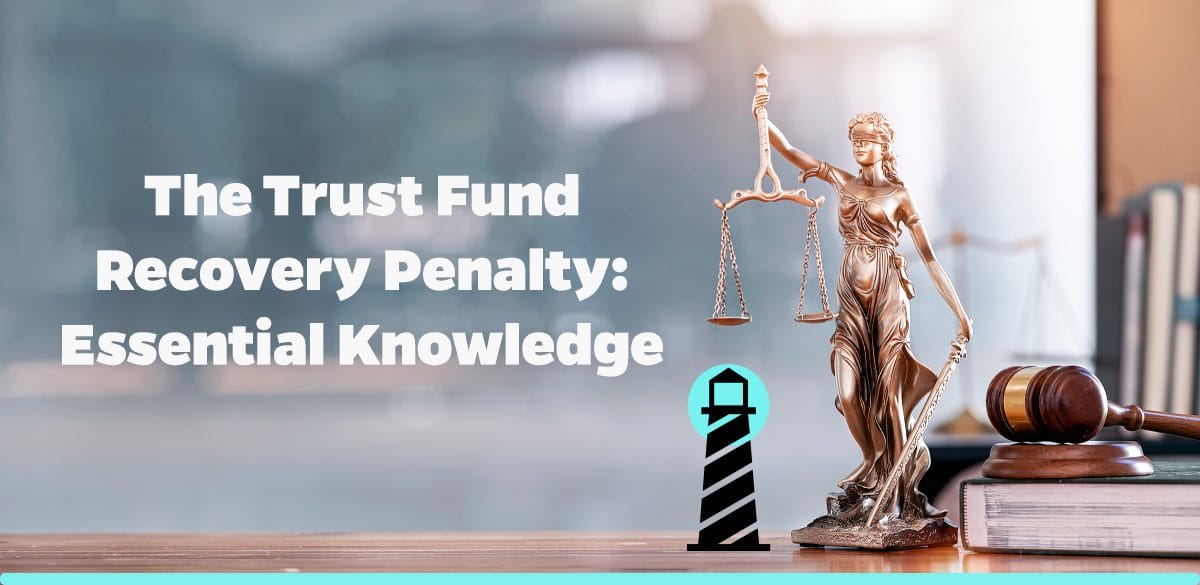Understanding the Trust Fund Recovery Penalty
Change is the only constant in the world of taxes, and understanding the intricate details of each amendment and update is essential for every taxpayer. A particular regulation that has proven perplexing for individuals and businesses alike is the Trust Fund Recovery Penalty (TFRP). A law that aims to maintain compliance but can often be misinterpreted, resulting in unforeseen consequences.
Avoiding tax problems is a common goal. At Brightside Tax Relief, we believe that knowledge is not just power, but a lifeline that can save you from unnecessary tax burdens. This article aims to shed light on the TFRP, offering you the crucial details that will help ensure your financial peace of mind.
What Is the Trust Fund Recovery Penalty?
In its simplest form, the Trust Fund Recovery Penalty is a measure executed by the Internal Revenue Service (IRS) to ensure the collection of unpaid income tax, Social Security, and Medicare funds. Without these funds, supporting colossive government schemes would be near impossible.
The term “trust fund” refers to the monies withheld from an employee’s paycheck, such as income tax, social security, and Medicare taxes. Employers are responsible for gathering these monies and passing them on to the IRS. If these monies aren’t paid, the IRS implements the TFRP, which can be levied against any person who is responsible for collecting or paying withheld taxes and willfully fails to do so.
Key Aspects of the Trust Fund Recovery Penalty
Here are critical factors to note about the Trust Fund Recovery Penalty:
• Not Exclusive to Businesses: While the TFRP is commonly associated with businesses, it is far-reaching and is applicable to any entity or individual meeting the criteria of “responsibility” and “willfulness,” these being two critical determining factors for its imposition.
• Level of Responsibility: Being responsible isn’t just about having ownership or a high-ranking position in an organization. It involves actively participating in financial decisions, particularly related to payroll taxes.
• Willfulness to Disobey: Willfulness refers to a deliberate act of not forwarding withheld taxes to the IRS. It implies an intentional disregard for known legal obligations.
Consequences of the Trust Fund Recovery Penalty
Experiencing the impact of the TFRP can prove burdensome, with penalties proving severe. Aside from financial penalties, you could face criminal charges if the IRS establishes a pattern of neglect. Note that the penalty isn’t only an additional fee; it’s a strict measure that often equals the entire amount of unpaid trust fund taxes.
Navigating the Trust Fund Recovery Penalty: Prevention and Resolution
Preventing the TFRP is the best course of action, but knowing how to navigate an imposed penalty is equally important. The following steps should aid in managing the penalty:
• Stay Compliant: Keeping up to date with your tax obligations is the most effective way of avoiding the TFRP. Ensure regular, accurate payments and document the process as evidence of compliance.
• Using Professional Assistance: When dealing with TFRP investigations, it’s essential to have professional support. At Brightside Tax Relief, we provide expert advice and help you navigate this complex process.
• Installment Agreements: If you can’t make the full payment, consider an installment agreement with the IRS. It’s a manageable approach to tackling unpaid tax debts.
Conclusion
The Trust Fund Recovery Penalty can be a significant cause of financial concern for individuals and organizations, but understanding its details and knowing how to both avoid and manage it, can significantly impact your experiences.
As a nationwide tax relief company, Brightside Tax Relief prides itself on empowering taxpayers with relevant, detailed, and easy-to-understand insights for stress-free tax management. For in-depth information about the TFRP and other tax-related concerns, you can visit IRS official site .




